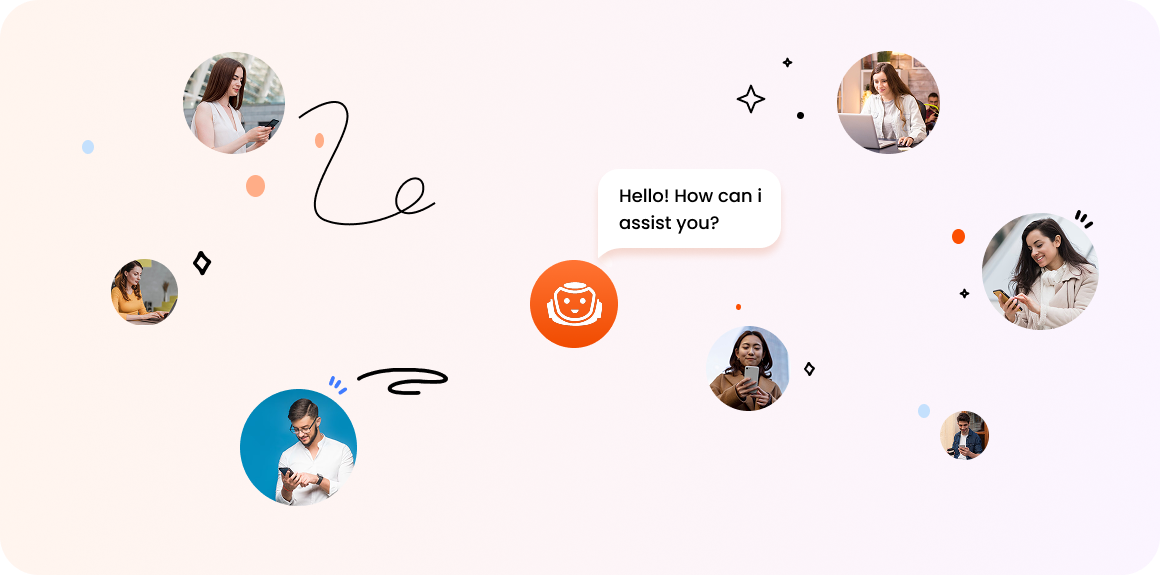Maximize Efficiency with AI-Driven Knowledge Management Chatbots (AI Agents)

The Knowledge Crisis in Enterprises
In the modern enterprise landscape, information is abundant but often scattered across multiple systems, departments, and databases. Employees, customers, and partners struggle to find the right information at the right time, leading to inefficiencies and delays. The lack of streamlined knowledge access is a hidden productivity drain, impacting decision-making, operational efficiency, and customer satisfaction.
The Challenge of Fragmented Information
A study by McKinsey found that employees spend an average of 1.8 hours per day searching for and gathering information—nearly 9.3 hours a week lost to inefficiencies. That’s almost 20% of the workweek wasted on an avoidable problem. Traditional knowledge repositories, such as static knowledge bases, FAQs, and internal documentation systems, are often outdated, difficult to navigate, and inconsistent across departments. This fragmentation leads to disconnected experiences, where employees and customers struggle to get answers quickly, slowing down productivity and increasing frustration.Knowledge gets trapped in different departments, reducing cross-functional collaboration.
Employees rely on outdated or incorrect information.
Traditional keyword-based searches require users to know exactly what they are looking for, limiting accessibility.

The Cost of Inefficient Knowledge Access
Poor knowledge management doesn’t just slow down operations; it has a direct financial impact. According to IDC, Fortune 500 companies lose $31.5 billion annually due to poor knowledge sharing. These losses stem from wasted time, redundant work, operational inefficiencies, and suboptimal decision-making.
Frustration due to inaccessible information leads to disengagement and attrition.
Organizations spend millions annually on customer support and training, costs that could be reduced with a smarter knowledge system.
Companies that fail to leverage AI for knowledge management risk falling behind their more agile competitors.
What is a Knowledge Management Chatbot/AI Agent?
A Knowledge Management AI chatbot is an intelligent virtual assistant designed to facilitate seamless access to enterprise knowledge. Unlike static knowledge bases, it provides dynamic, context-aware responses to user queries, improving knowledge accessibility across an organization.It acts as a smart knowledge concierge, delivering instant, relevant answers while continuously learning and evolving based on interactions.
Hi, I am your AI Agent! How can i help you?
I need the latest version of the company’s remote work policy.
Got it! Let me check the Knowledge Base… 🔍
✅ Here’s the latest Remote Work Policy:
![]()
Need help with anything else?
No, that’s all. Thanks!
Generative AI-Powered Knowledge Management AI Agent

This AI-powered knowledge management solution extends accessibility across multiple enterprise channels, including Web Apps, Mobile Apps, WhatsApp, Microsoft Teams, Slack, Facebook Messenger, Google Chat, Email, SMS, and Voice Assistants like Google Home and Amazon Alexa, ensuring that knowledge is always within reach for users.

Hi, I am your AI Agent! How can i help you?

Seamless Enterprise Integration
Built on enterprise-grade cloud platforms such as AWS, GCP, IBM Cloud, and Microsoft Azure, Our AI Knowledge Management Chatbot is pre-integrated with CRM, ERP, and document management systems, ensuring smooth adoption and streamlined knowledge access. The AI-powered system also provides robust analytics and insights, helping enterprises identify knowledge gaps, optimize processes, and enhance overall decision-making.By leveraging Generative AI-powered knowledge management solutions, businesses can revolutionize how information is accessed, shared, and utilized. This results in improved employee efficiency, reduced support costs, and enhanced customer satisfaction.
How It Differs from Traditional Knowledge Bases
Unlike traditional knowledge repositories that require manual searches and keyword inputs, a knowledge base chatbot enables conversational queries and provides personalized recommendations. It eliminates the need for users to sift through lengthy documents or outdated FAQs, offering instant and accurate answers. Additionally, AI-powered chatbots learn from user interactions, continuously optimizing their responses and keeping knowledge up to date without manual intervention.
| Feature |
|
|
|---|---|---|
| Search Method | Requires manual search with exact keywords. Users must know the correct terminology to retrieve results. Example: An employee searching for “remote work guidelines” may not find results if the document is titled “telecommuting policies.” | Conversational search with natural language processing (NLP), allowing users to ask questions in their own words. Example: A user can simply ask, “Can I work from home on Fridays?” and get the correct policy instantly. |
| Response Time | Time-consuming; users need to browse multiple articles and documents to find relevant information. Example: A customer support agent looking for troubleshooting steps may take several minutes searching different folders. | Instant responses with precise answers pulled from the most relevant sources. Example: A chatbot can immediately provide troubleshooting steps when asked, “How do I reset my account password?” |
| Personalization | Static responses, same for all users. Limited adaptability based on user roles or previous interactions. Example: An IT support document may include solutions irrelevant to a non-technical employee. | Dynamic responses tailored to user preferences, role, and query history. Example: A chatbot recognizes that a marketing executive asking about software access needs a different answer than an IT administrator. |
| Knowledge Updates | Requires manual updates by administrators, often leading to outdated information. Example: A compliance guideline may remain unchanged in the knowledge base even after regulatory changes. | Auto-updates knowledge base from interactions and newly added data sources. Example: A chatbot automatically integrates updated compliance policies and informs employees of new regulations. |
| User Interaction | One-way interaction; users read through documents without real-time engagement. Example: Employees must open and read lengthy PDFs to find relevant sections. | Two-way interaction with contextual, real-time engagement. Example: A chatbot can summarize a 50-page policy document and answer specific follow-up questions. |
| Integration | Limited integration with enterprise tools; users may need to navigate different systems for answers. Example: An HR system might store leave policies separately from payroll details, making retrieval difficult. | Seamless integration with CRMs, ERPs, and internal knowledge bases for unified access. Example: A chatbot integrated with HR and payroll systems can answer, “How many leave days do I have left?” without switching platforms. |
| Support Availability | Users may struggle to find relevant documents outside working hours. Example: A sales representative in a different time zone may not get immediate assistance for pricing details. | 24/7 availability for instant support across multiple channels. Example: A chatbot can answer customer queries about pricing and refund policies at any time. |
| Example Use Case | Employee searching an internal HR policy document manually, taking time to find the right file. | Employee asking a chatbot, “What is the remote work policy?” and receiving an instant, accurate response. |
How AI-Powered Knowledge Management AI Chatbot Works

Why Choose Gen AI-Powered Knowledge Management Chatbot (AI Agent)?

Key Benefits of an AI Chatbot for Knowledge Management
Reduces time spent searching for information by up to 40%.
Continuously refreshes knowledge repositories to ensure accuracy without manual intervention.
Enhances knowledge discovery with intelligent suggestions based on user behavior and past queries.
Supports omnichannel deployment for seamless accessibility on web, mobile, messaging, and voice platforms.
Protects sensitive information with enterprise-grade security measures and access control policies.
Reduces training time and improves operational efficiency by providing employees with real-time, accurate responses.












